The evolution of smartphones. Part 1: 1994 - 2010
Back in 2013, I published an article Old Advertising of Cell Phones and Smartphones (from the 1980s to the end of the 2000s) , where you can watch the brightest phones from the 1980s.
But this time I want to trace exactly the smartphones - communicators, smart phones, phablets, shades and other devices of the same type, the mere definition of which caused battles among geeks. And so you need to start with IBM Simon, released over 20 years ago . Then we move on to Symbian devices, the appearance of the first iPhone and the first Android smartphone from HTC, recall the devices from Nokia and end the journey with the latest gadgets introduced in 2016.
In the comments, please share your memories and provide links to your own reviews.
')
If the article lacks a specific model - please write about it in the comments with the image. So we will make the "Evolution" more complete.
IBM Simon had a 4.7-inch large monochrome display with a resolution of 160x293 pixels, and weighed half a kilo without docking station. This futuristic for the time a mixture of a computer and a telephone without a keyboard, but with a touch screen, combined in itself a mobile phone, a pager, an organizer, mail, an alarm clock. The gadget worked on a 16-bit Vadem VG-230 16 MHz processor. By the way, there was a whole MB of RAM here. Want to see what's inside? Read analysis on Habré , and in a post on Geektimes read how it is possible to load pictures on this gadget.

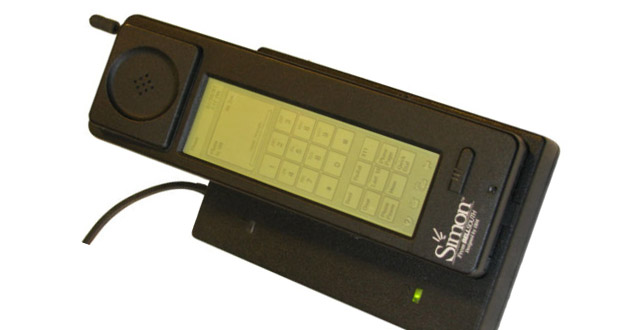
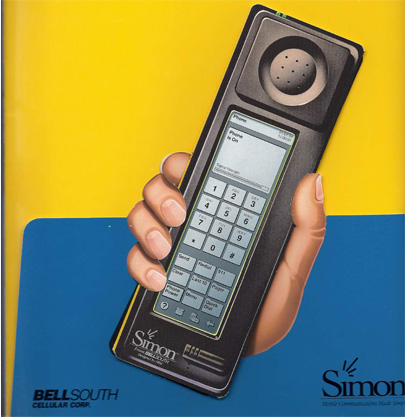
The film "Network", 1995.
Could you not have dreamed of this Nokia device in 1996? He had a keyboard and two monochrome displays - an internal 4.5-inch 640x200 pixels, an external one - 50x38. Weighed a gadget of 397 grams - you could fight off from anyone.
For the first time the device was called "Communicator".
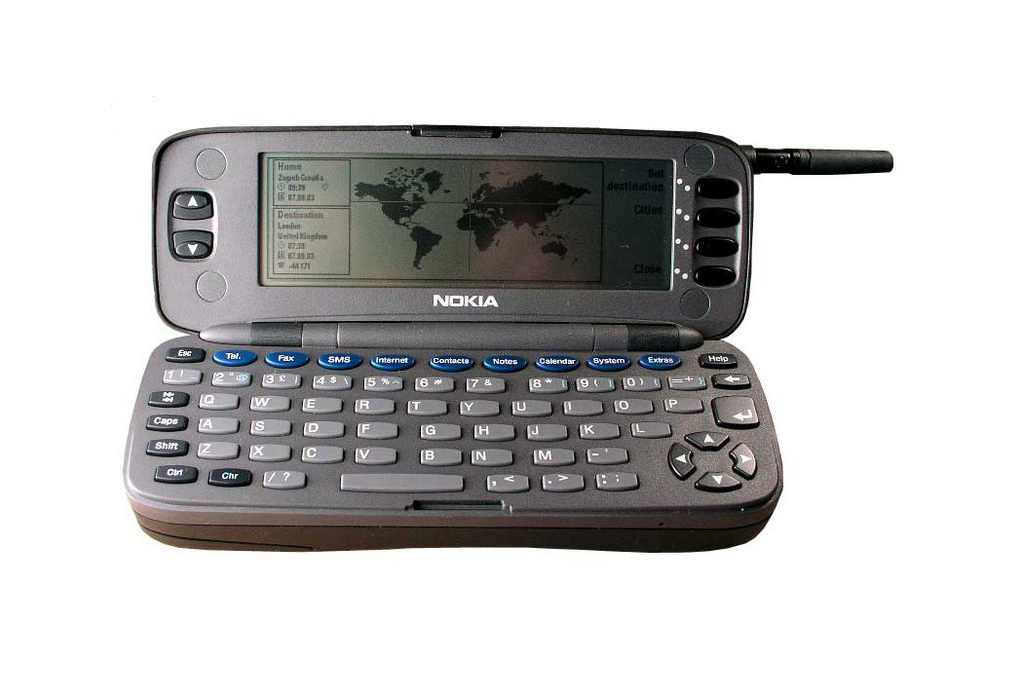
We turn to the first device, which is called "smart phone" in the framework of the manufacturer's advertising campaign. This is the Ericsson R380, another gadget with a large 3.7-inch touchscreen display and on the Symbian operating system. Prior to this, Ericsson did many handheld computers without the ability to call and phones without being able to use them as computers. “We call it a smartphone,” the ad says.
The device was presented to the world in December 1999, and in 2000 they began to sell.
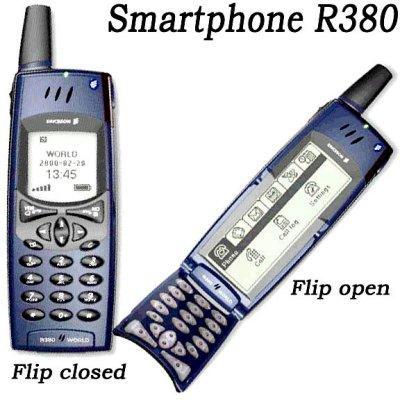
The history of Blackberry began in 1984, when Mike Lazaridis, a student at the University of Waterloo, registered RIM - Research In Motion. The company began with the design of devices for wireless data transmission, and since the 1990s, borrowed text transmission technology in paging networks from Ericsson and RAM Mobile Data, and then released a pager with a QWERTY-keyboard that allows you to send messages. Further, most Blackberry devices looked exactly like this.
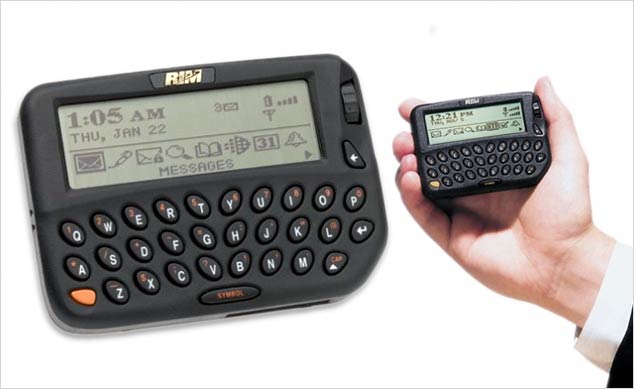
The first Blackberry smartphone appeared in 2002. The BlackBerry 5810 didn’t have a speaker and a microphone, we needed a headset for talking. But there was a keyboard.
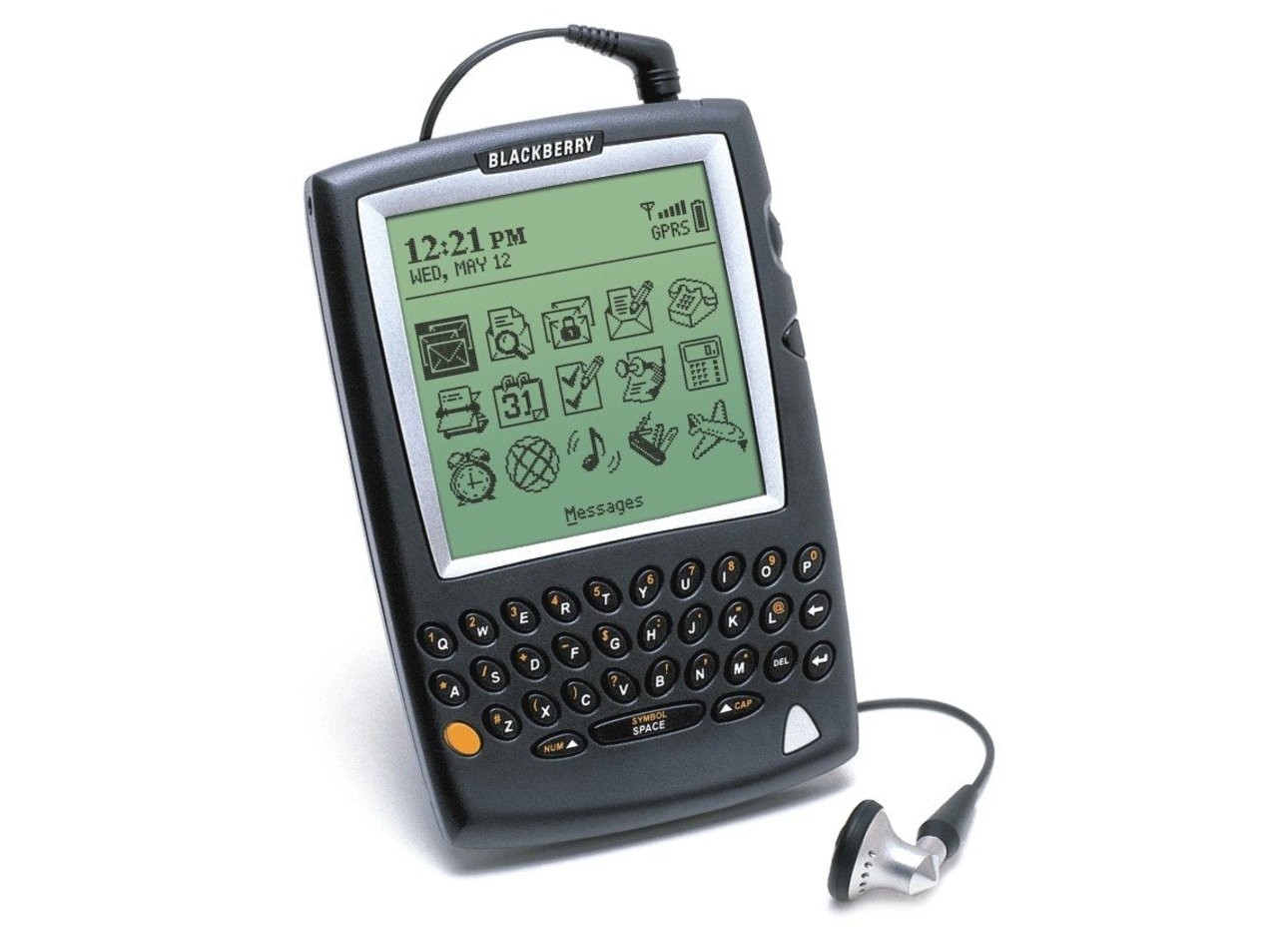
Nokia 9210 continued the line of "communicators" from the Finnish company. We released a gadget on Symbian OS 6.0 in 2002, but I still remember how I wanted to get one. And I do not know what I would do with it?
Nokia 9210 could boast a color screen of 640x200 pixels, 8 MB of RAM and 14 MB of internal memory. He already worked for a short time - 10 hours. Review - here .
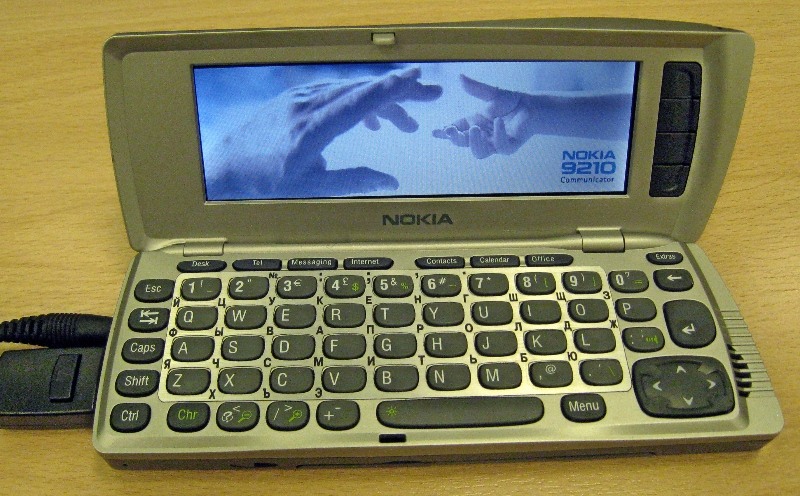

Nokia 7650, announced on June 26, 2002, was the first smartphone on Symbian OS - before that there were only communicators. Here you can begin to argue what and how should be called.
The device in the media dubbed the "camera phone" for the built-in camera, and he generally became the first device from Nokia with a camera.
The processor is a 32-bit RISC 104 MHz. Memory - 4 megabytes, of which only 3.4 MB were available to the user.

In 2002, Sony Ericsson introduced the P800 smartphone with a UIQ 2.0 interface, made on the basis of Symbian OS v 7.0.

Since April 2002, HTC has been producing handheld personal computers running Windows Mobile. The first was the HTC Wallaby with an Intel StrongARM 206 MHz processor, 32 MB of RAM and the same amount of flash memory, MMC and SD card support, a 3.5-inch TFT display with a resolution of 240x320 pixels ... The operating system is Microsoft Pocket PC 2002 Phone Edition.
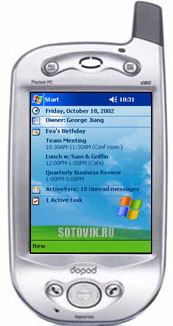
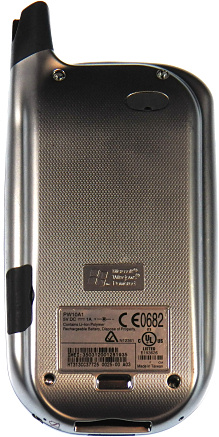
A year later, the HTC Falcon appeared.
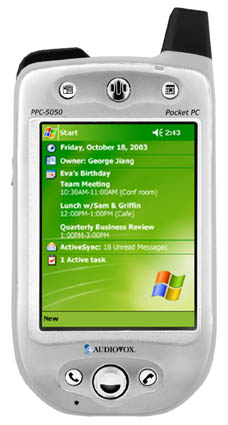 '
'
And in 2004 - HTC Himalaya. This handheld no longer had a huge antenna.
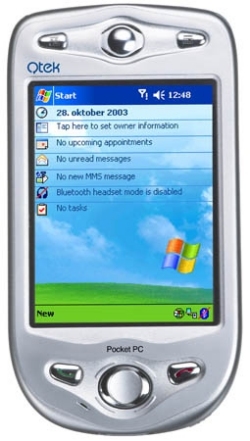
In February 2003, the German company Siemens with the original Siemens SX1 on Symbian OS announced the launch of the smartphone market. The numeric keys are located on both sides of the case. At the time of the start of sales in December 2003, the gadget was worth $ 750, but in two years it dropped to 250.
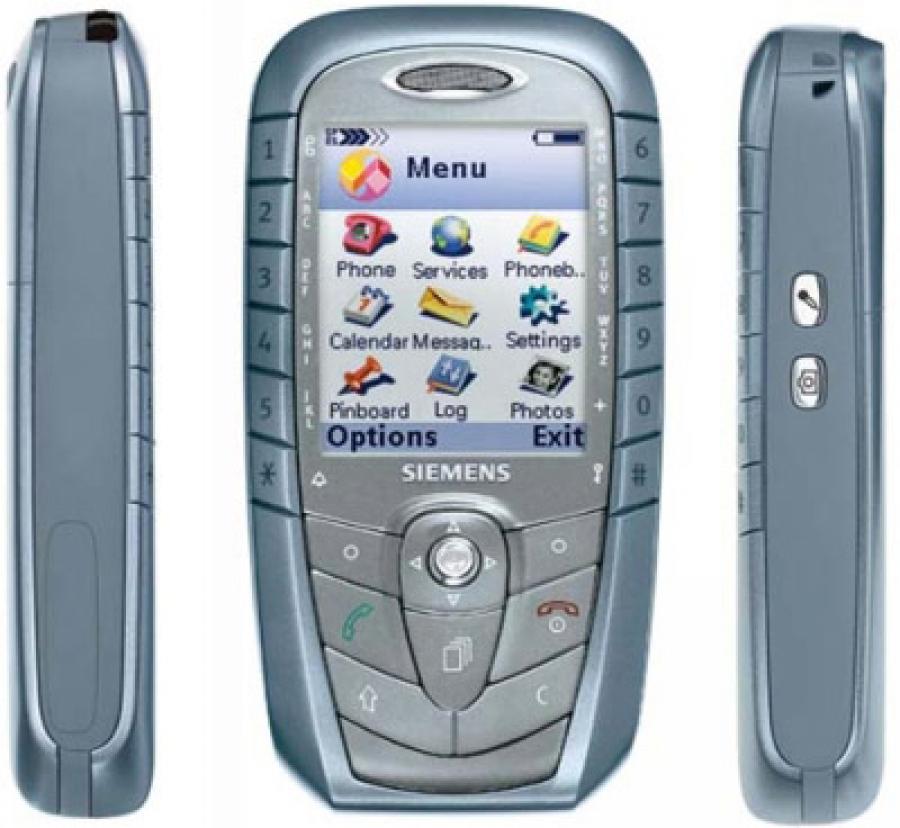
At the exhibition in Hannover in 2005, Siemens demonstrated a new concept of a smartphone - with a laser keyboard.

In 2004, the Sony Ericsson P910 comes out. The gadget got a QWERTY keyboard on the back of the flip. Flip while you can generally remove from the gadget to get the classic version of the smartphone with a minimum of buttons. The model on Symbian is based on the ARM9 156 MHz processor, has 64 megabytes of RAM and supports Memory Stick PRO Duo up to 2 gigabytes.
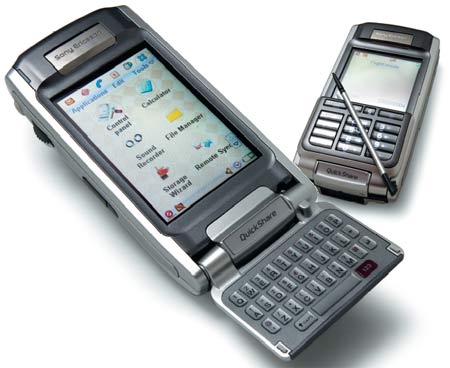
HTC Blueangel went on sale in October 2004. It was made under different brands, including Siemens. The diagonal of the display is 3.5 inches, the memory is 96 MB internal and 128 MB operational. The device worked on Windows Mobile 2003SE. The processor is an Intel PXA263 400 MHz. The gadget is made in the slider form factor with a full-sized keyboard.
Later there were Alpine, Gemini, Apache, Galaxy, Wizard, Prophet, Charmer, Hermes, Trinity and many other devices on Microsoft OS.
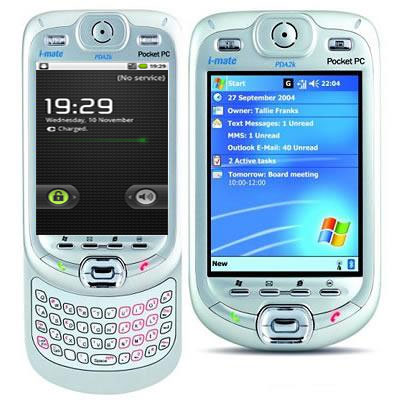
The BlackBerry 7210 is the first Blackberry smartphone with a color display. The gadget had 2 megabytes of internal memory and a 960 mAh battery.
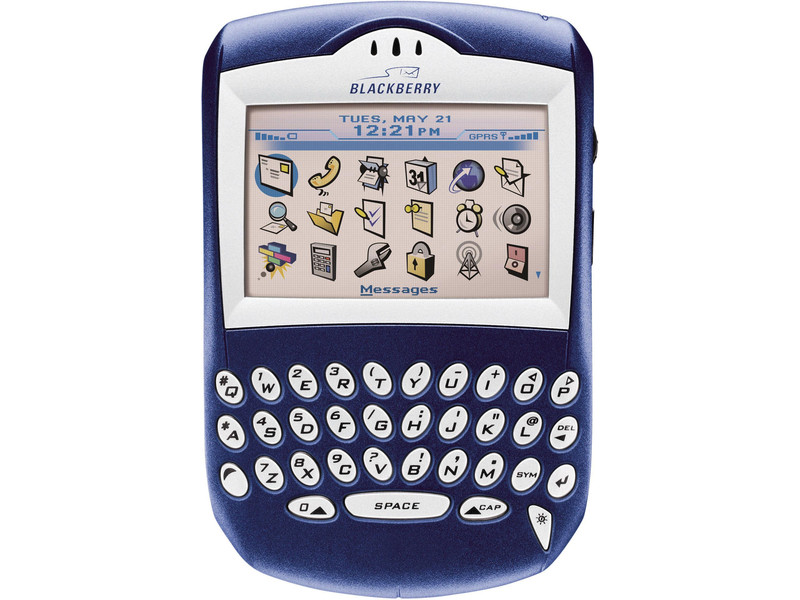
HTC's Qtek S100 smartphone has been sold since 2005 under various names - 2 Xda II Mini (Asia), O2 Xda mini (Germany), T-Mobile MDA compact, i-mate JAM, Vodafone VPA Compact, Dopod 818, Krome Spy, and Orange SPV M500. This Windows Mobile 2003 device had 64 MB of internal and the same RAM, an SDIO / MMC card slot, a 1.3 megapixel camera, and a 2.8-inch screen with a resolution of 240x320 pixels.
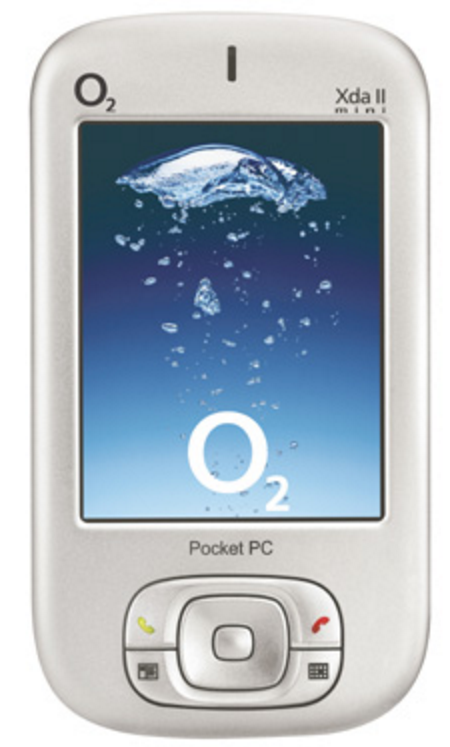
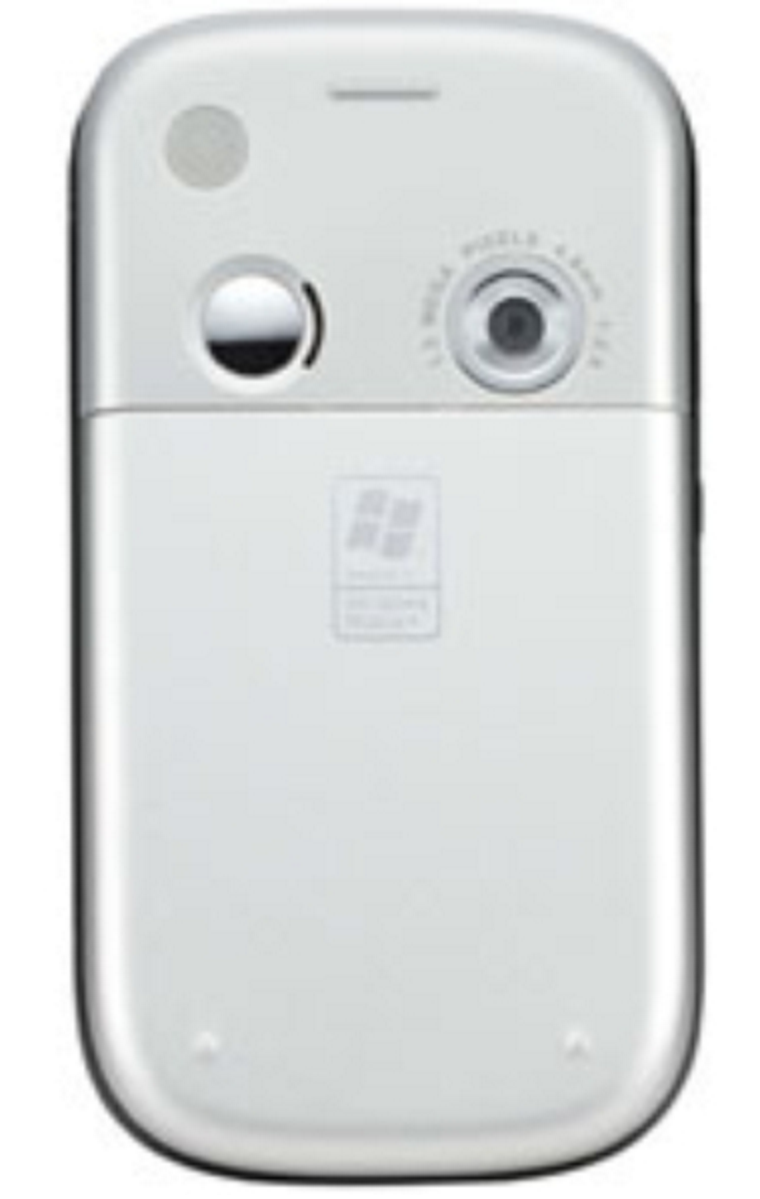
In 1998, Nokia, Psion, Ericsson and Motorola merged to develop Symbian OS. Later, Sony Ericsson, Siemens, Panasonic, Fujitsu, Samsung, Sony, Sharp and Sanyo joined the consortium. The Symbian platform was the most popular for smartphones in the world in the mid-2000s. Read about Symbian 's sunrise and sunset here .
Lenovo's first gadget on Symbian was the Lenovo P930 device in 2005. The device supported GPRS, had a color display with the ability to enter the stylus and a 1-megapixel camera. The memory could be expanded using SD / MMC memory cards. The smartphone had a GPS navigator, an MP3 player, and it was possible to install JAVA applications on it.
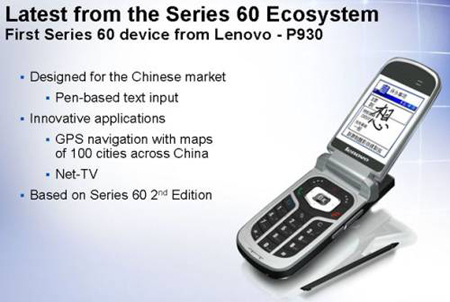
Lenovo ET980 Smartphone on Windows Mobile 5.0 received an Intel PXA270 312 MHz processor. Overlay on the smartphone added to it the usual buttons. The release of the gadget began in 2005.
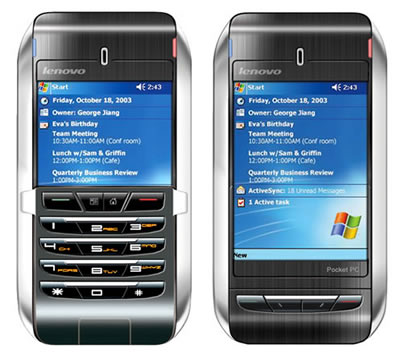
In July 2005, Google Inc. buys Android Inc., in November 2007, announces the creation of the Open Handset Alliance and announces the open mobile Android platform. In the same month, the alliance presents the first version of the developer package. In 2008, the first version of the operating system was released.
In September 2006, HTC released the P3600 on Windows Mobile - a 150-gram communicator with a 2.8-inch TFT display and a resolution of 240x320, two cameras — the main 2 MP and the front one, 64 MB of operational memory and 128 MB of internal memory. Samsung for the smartphone produced the processor.
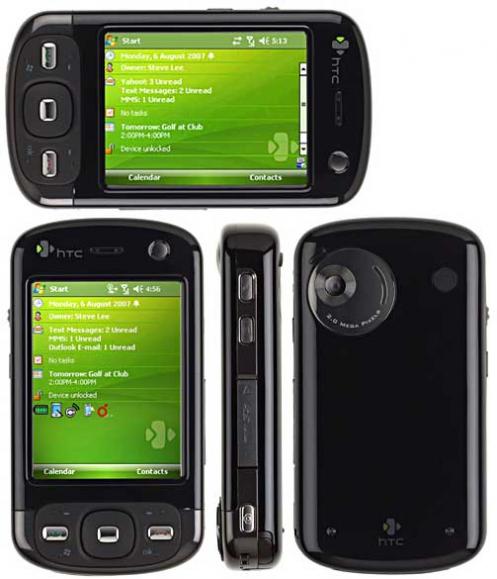
In March 2007, the Finns released the Nokia N95. The user Habra called him the King of smartphones , and in the first comment another user expressed his “fi”: “there is no qwerty keyboard, so I don’t even look in his direction”.
Form factor - brick slider. The display is 2.6-inch 240x320 pixels. 330 MHz processor. Internal memory 160 MB. Camera - 5 megapixel with autofocus, electronic stabilizer and built-in flash. Worked gadget on Symbian OS v9.2.

In May 2007, it became known that sales of the Apple iPhone will begin in June. Steve Jobs tried to squeeze the maximum out of his subordinates so that the device was close to the ideal. Not one book has written about it.
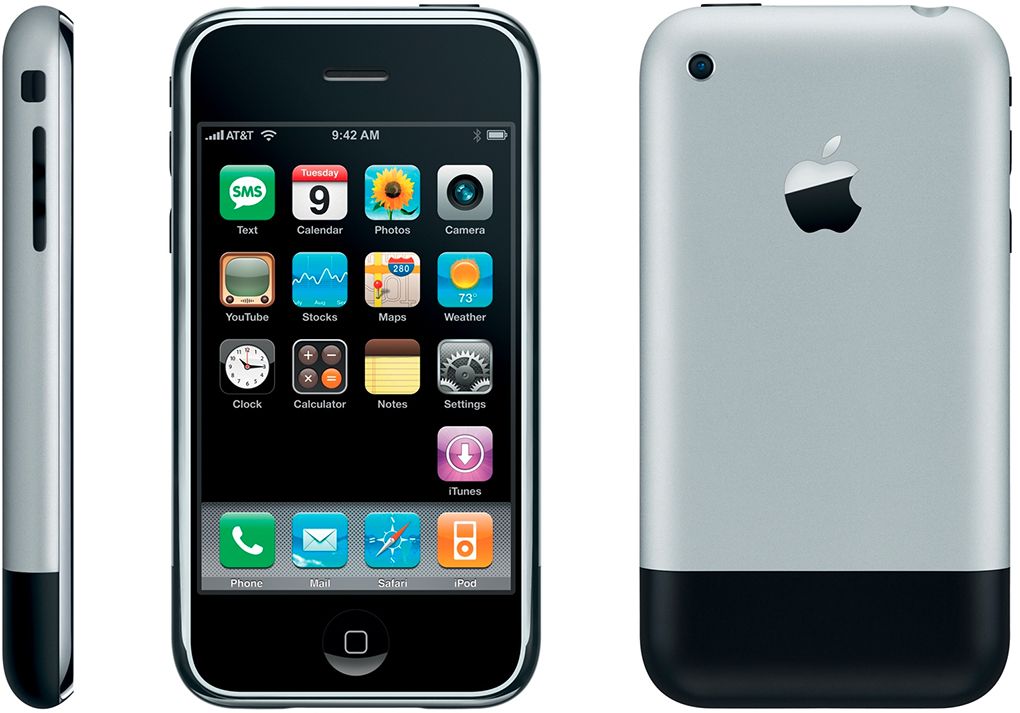

Smartphone HTC S740 was released in 2008. It is based on a Qualcomm MSM7225 528 MHz processor, had 256 megabytes of RAM and internal memory, and supported microSD. The screen size is 2.4 inches, and the resolution is 320x240 pixels.
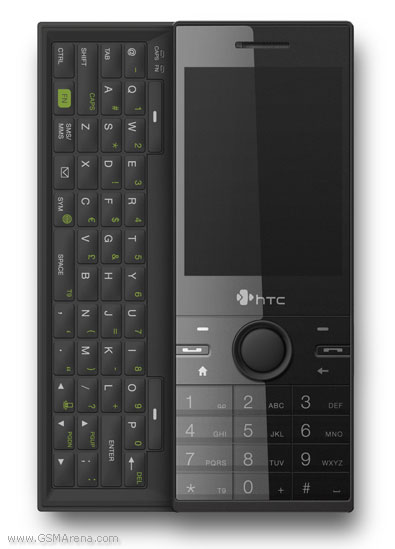
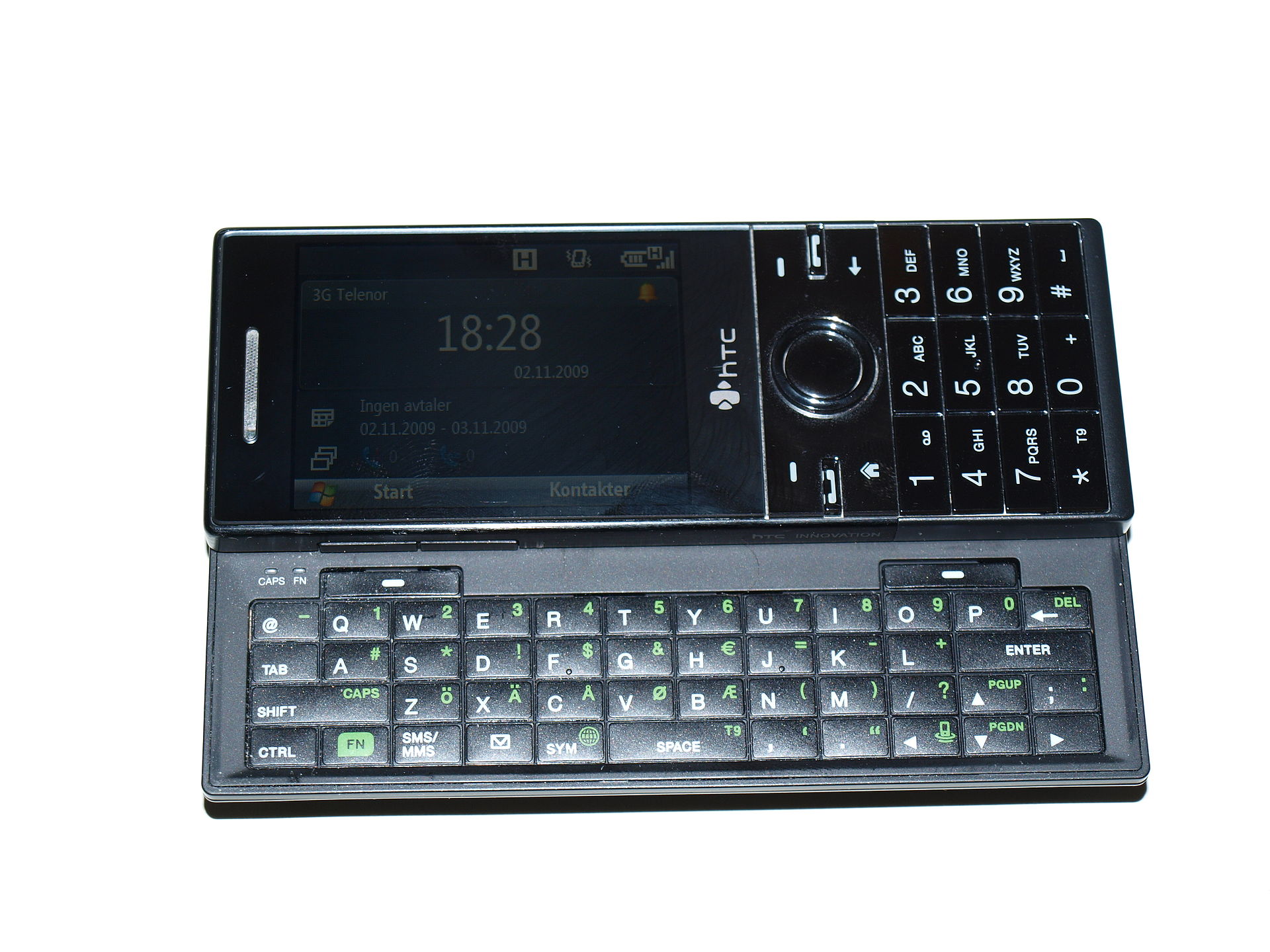
In October 2007, the BlackBerry launches one of its first smartphones aimed not at the corporate segment, but at ordinary users. The BlackBerry Pearl 8120 smartphone has a simplified keyboard - perhaps it can be called a “semi-QWERTY”, a 2 megapixel camera and Wi-Fi support. Color LCD-display had a resolution of 240x260 pixels.
The internal memory of 64 megabytes could be increased with the help of microSD.
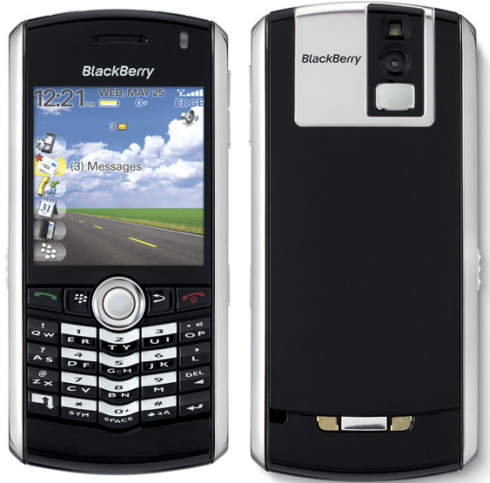
The BlackBerry Bold 9000 smartphone has got a 2.6-inch (non-touch) display with a resolution of 460x320 pixels, a 2-megapixel camera and a 624 MHz processor. RAM is 128 megabytes, and the built-in memory is already a whole gigabyte. It was the first smartphone from RIM with GPS. The device was announced on May 12, 2008, and started selling on July 9, 2008.
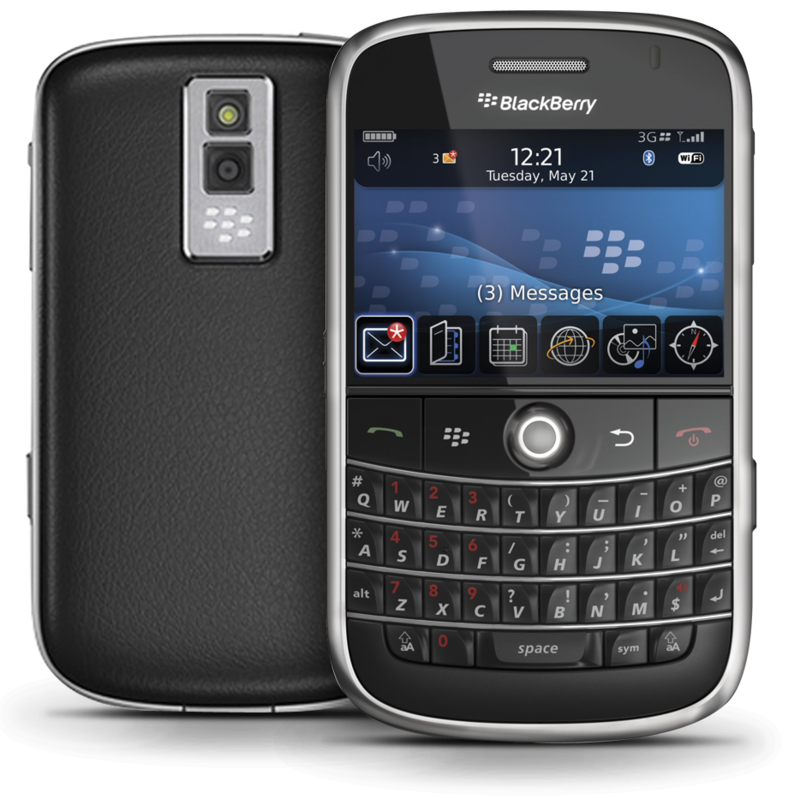
On June 10, 2008, Apple introduced the iPhone 3G , an improved model in which the company tried to get rid of the jambs of the first version - for example, the device was now connected to 3G networks.
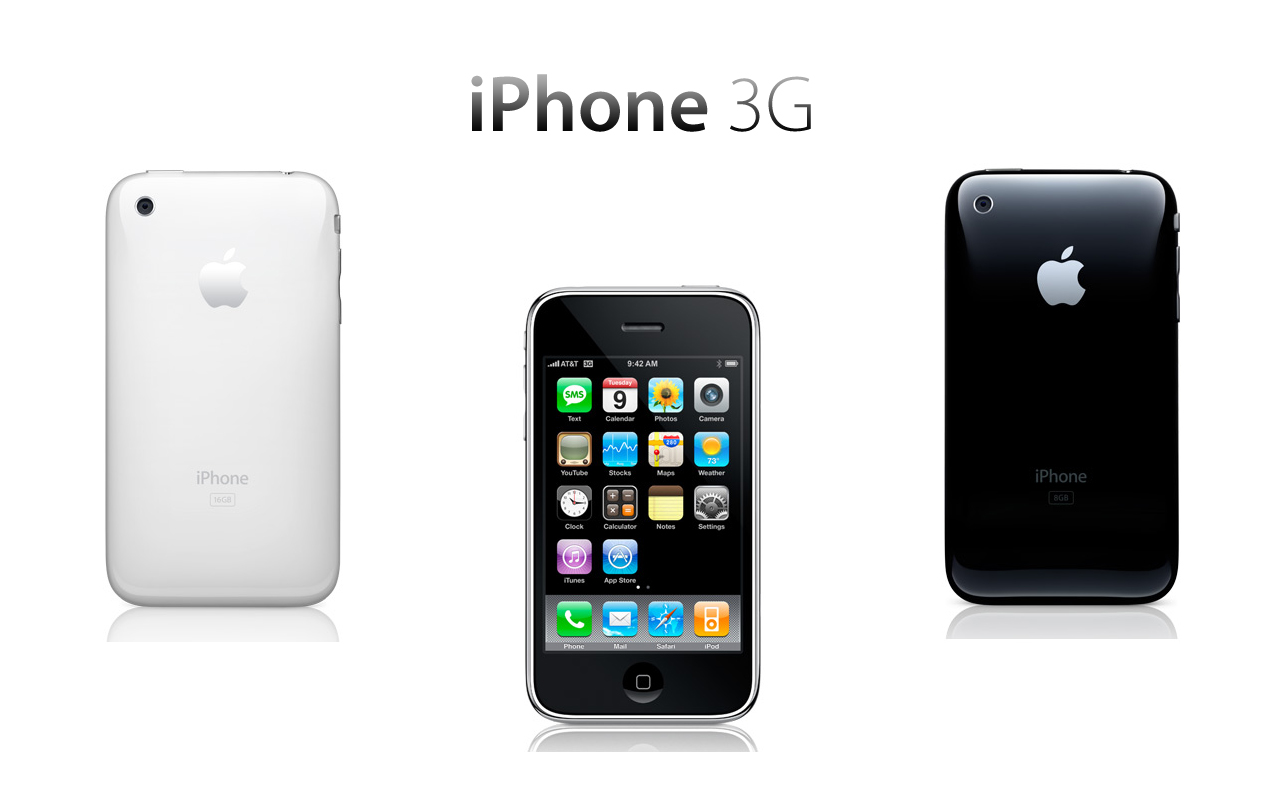
Sales of the HTC Dream, the first HTC device on Android, began in April 2009. For the first time, photos of this “GooglePhone” and “iPhone Killers” appeared online in September 2008. The smartphone has a qwerty keyboard, a 3 megapixel camera and a 3.5-inch touchscreen display.
A year after the release of the smartphone, Apple accused HTC of violating 20 patents and prepared more than 700 pages with a description of the claims:
This press release with the announcement of HTC War, the Taiwanese company gave a logical answer:
The list of devices that allegedly violated Apple’s patents included Nexus One, Touch Pro, Touch Diamond, Touch Pro2, Tilt II, Pure, Imagio, Dream / G1, myTouch 3G, Hero, HD2 and Droid Eris. And this can be called recognition by Apple.
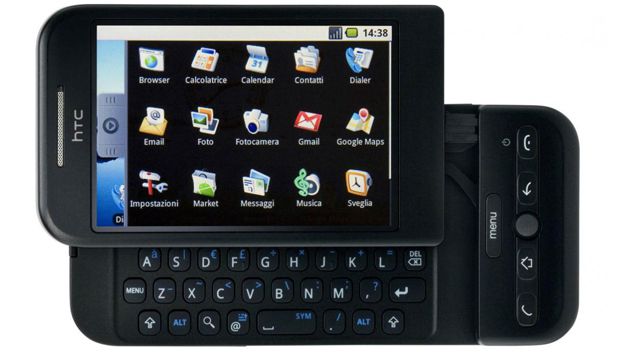

Korean smartphone Samsung announced its first smartphone in the Galaxy line on April 27, 2009, a few days after the launch of HTC Dream sales. A tiny 3.2-inch AMOLED screen, a 5-megapixel camera with autofocus and LED flash, a 3.5-mm headphone jack, a set of Google's pre-installed applications, 8 GB of internal memory, a 1500 mAh battery - that's what Samsung Galaxy could boast i7500 Read the review here .
Russian commercial - filmed in one double.
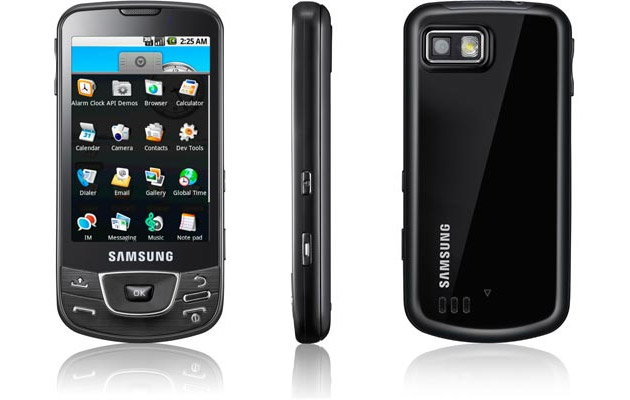
The second HTC phone on Android - HTC Magic - was released in April 2009, and demonstrated in February of the same year at Mobile World Congress. Overview of the smartphone read here . Pay attention to the box around the camera.

In 2008, BlackBerry released its first smartphone with a touchscreen and without a QWERTY keyboard. The gadget was presented in September, and released in November 2008. The device has a display with a diagonal of 3.25 inches and a resolution of 360x480 pixels. The processor is a Qualcomm MSM7600 528 MHz. Again, the gadget had 128 megabytes of RAM. Built-in - 1 gigabyte, and there was support for microSD up to 16 GB.
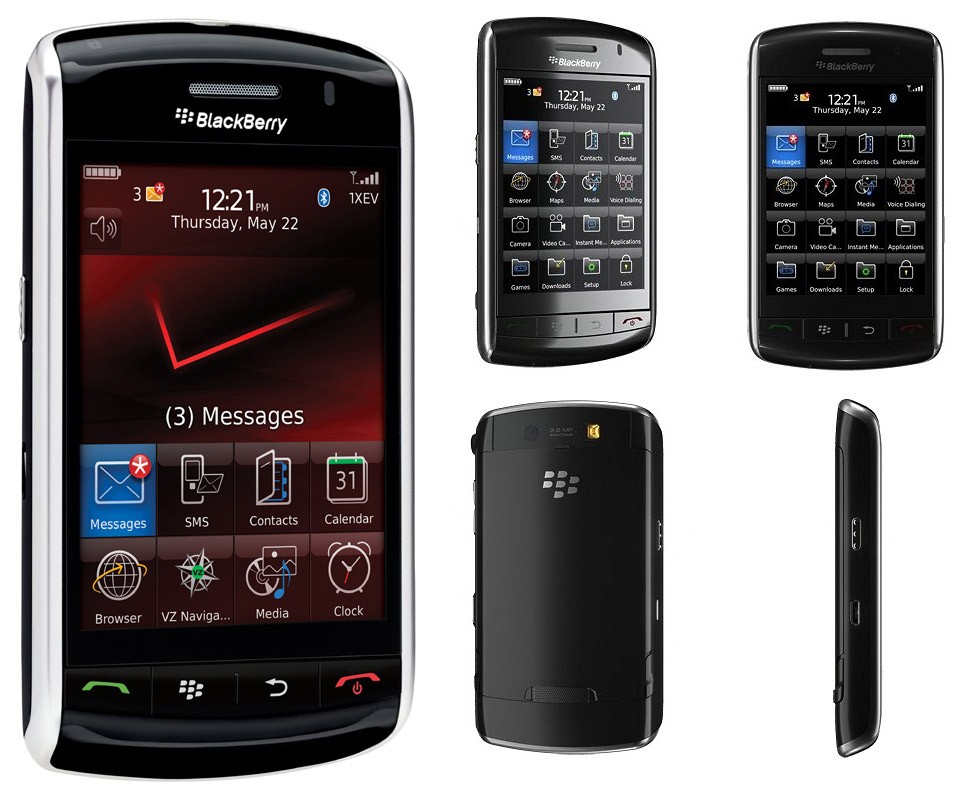
The Nokia 5800 smartphone was introduced in October 2008. The device had a 3.2-inch screen with a resolution of 640x360 pixels. The Freescale MXC300-30 ARM11 434 MHz processor, 128 megabytes of RAM. Included with the gadget was a microSD for 8 gigabytes.
The main camera of 3.2 megapixels received Carl Zeiss optics, autofocus and LED flash.
On June 8, 2009 at WWDC in San Francisco, Apple showed the iPhone 3GS with the updated iPhone OS 3.0. A 3.5-inch LCD display with a resolution of 320x480 pixels was developed by Apple, produced by LG. The processor is developed and produced by the Korean competitor Samsung S5PC100 ARM 833 MHz, but the hardware frequency is reduced to 600 MHz. Camera - 3 megapixels. RAM - 256 MB, built-in - 16 or 32 GB. The device has received support for HSDPA communication.
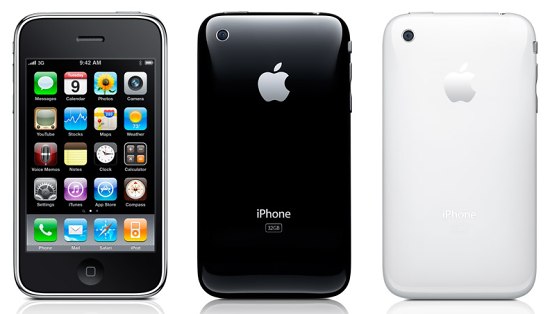

HTC Hero went on sale in July 2009, in Russia - in September. It was the third HTC smartphone on the Android operating system. And the first Android-based smartphone that supports Adobe Flash.
The review is on Geektimes - read the link .
What about the technical characteristics - Hero had 256 megabytes of flash memory and 288 megabytes of RAM. The processor is a Qualcomm MSM7600A ARM11 528 MHz or MSM7200A ARM11 528 MHz.
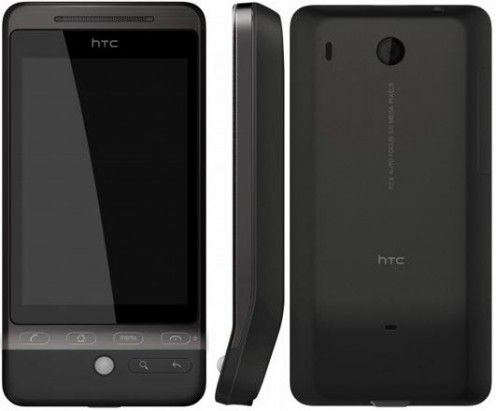
Smartphone HTC Evo 4G has become the first Android device with support for WiMAX.
The device on the Qualcomm QSD8650 1 GHz processor received 576 megabytes of RAM and 1 GB of internal memory, a 4.3-inch screen with a resolution of 480x800 pixels and an 8-megapixel camera.
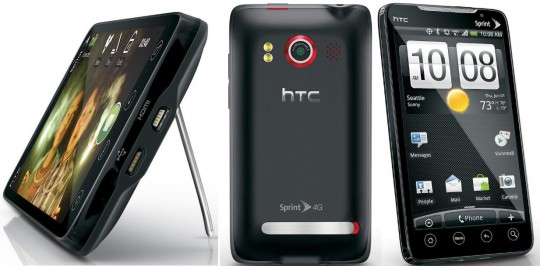
In October 2009, Motorola released the Droid smartphone, a slider on Android with a QWERTY keyboard. The device worked with Wi-Fi-networks, had a 3.7-inch display with a resolution of 854x480, supported microSD memory cards up to 16 gigabytes. The processor is Texas Instruments OMAP 3430. The internal memory is 512 megabytes, the operational memory is 256 megabytes.
This is the first smartphone that came with the free Google Maps Navigation application.
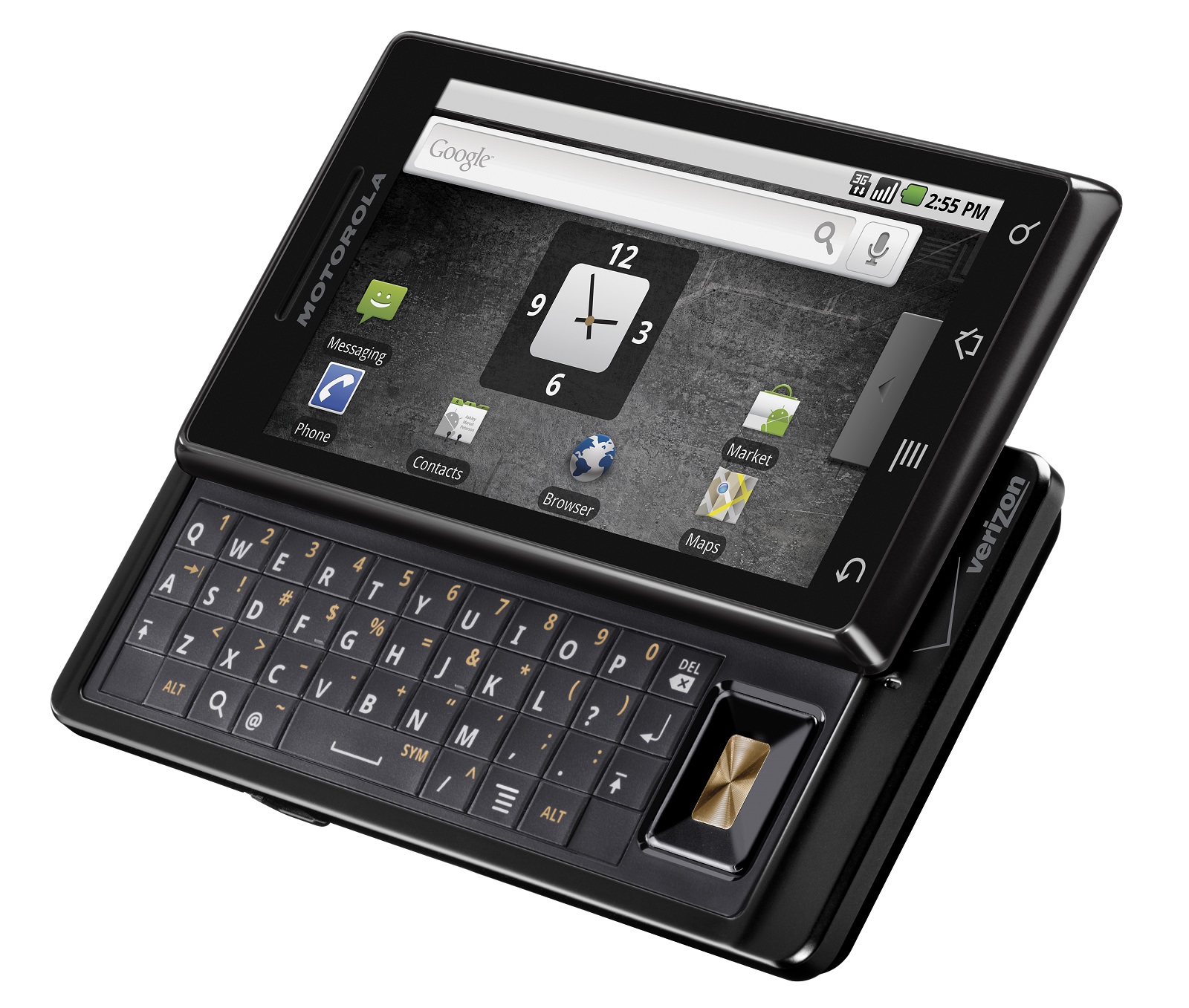
As of July 2010, the Motorola Droid was the most popular Android device. And the second, third, fourth, fifth, eighth and ninth places in this rating were taken by HTC devices.
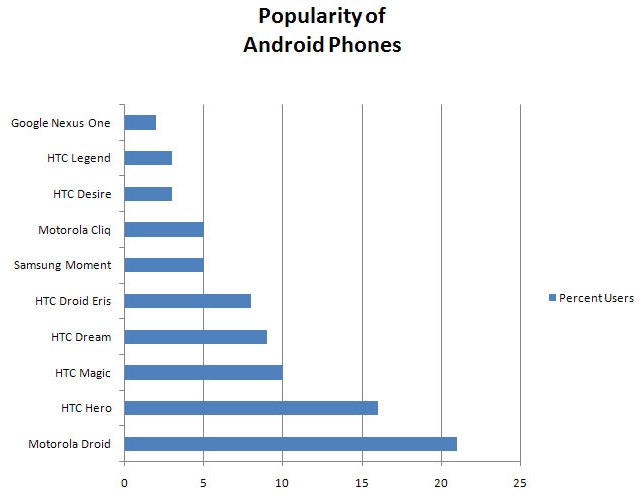
In November 2009, HTC released Leo (HD2). This is a smartphone on the Windows Mobile operating system, with a 5-megapixel autofocus camera, a 4.3-inch TFT display with a resolution of 480x800 pixels. Qualcomm Snapdragon QSD8250 1 GHz processor, 512 megabytes of internal and 488 megabytes of RAM. HTC Leo is the first smartphone with a capacitive screen on Microsoft OS.
Surprisingly, in the review of the smartphone on Geektimes, such phrases slipped: "It lies in your hand like a glove, but people with small palms are unlikely to be comfortable using the phone with one hand" and "However, it is more designed for men with large palms and fingers." Let me remind you, the display is 4.3 inches. Now several of my friends of girls walk with Asus 5.5 inches and are very pleased with its size.
In other reviews, they wrote “HD2 is really huge.” I look at my Lenovo Phab Plus and am surprised.
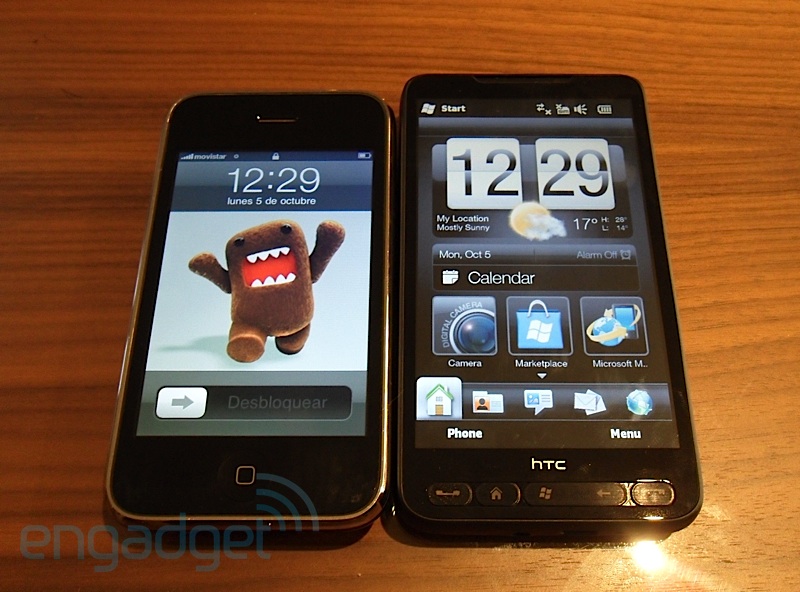
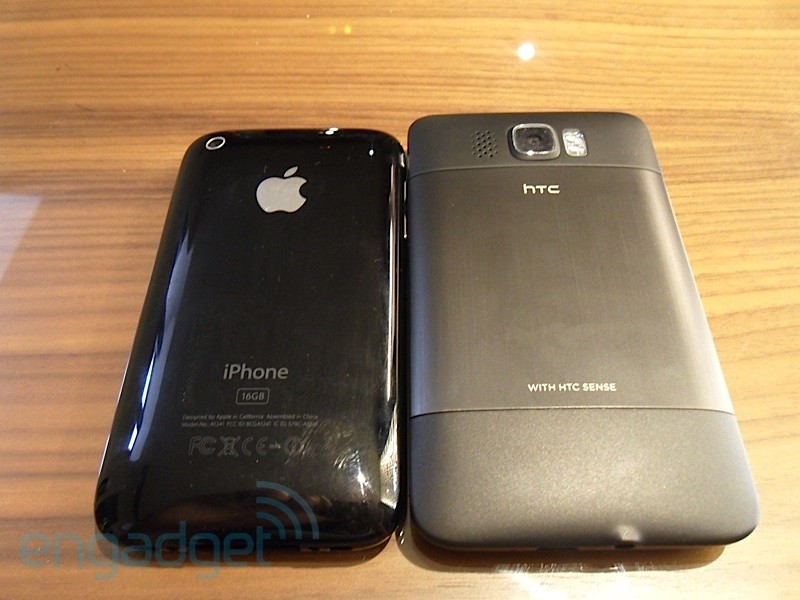

In November 2009, Nokia launches the Nokia N900 Internet Tablet, announced on September 2 at Nokia World. A slider with a QWERTY-keyboard on Maemo received 256 megabytes of RAM and 32 GB of flash memory, a slot for microSD up to 32 GB, a 5-megapixel camera, a 3.5-inch screen with a resolution of 800x480 pixels.
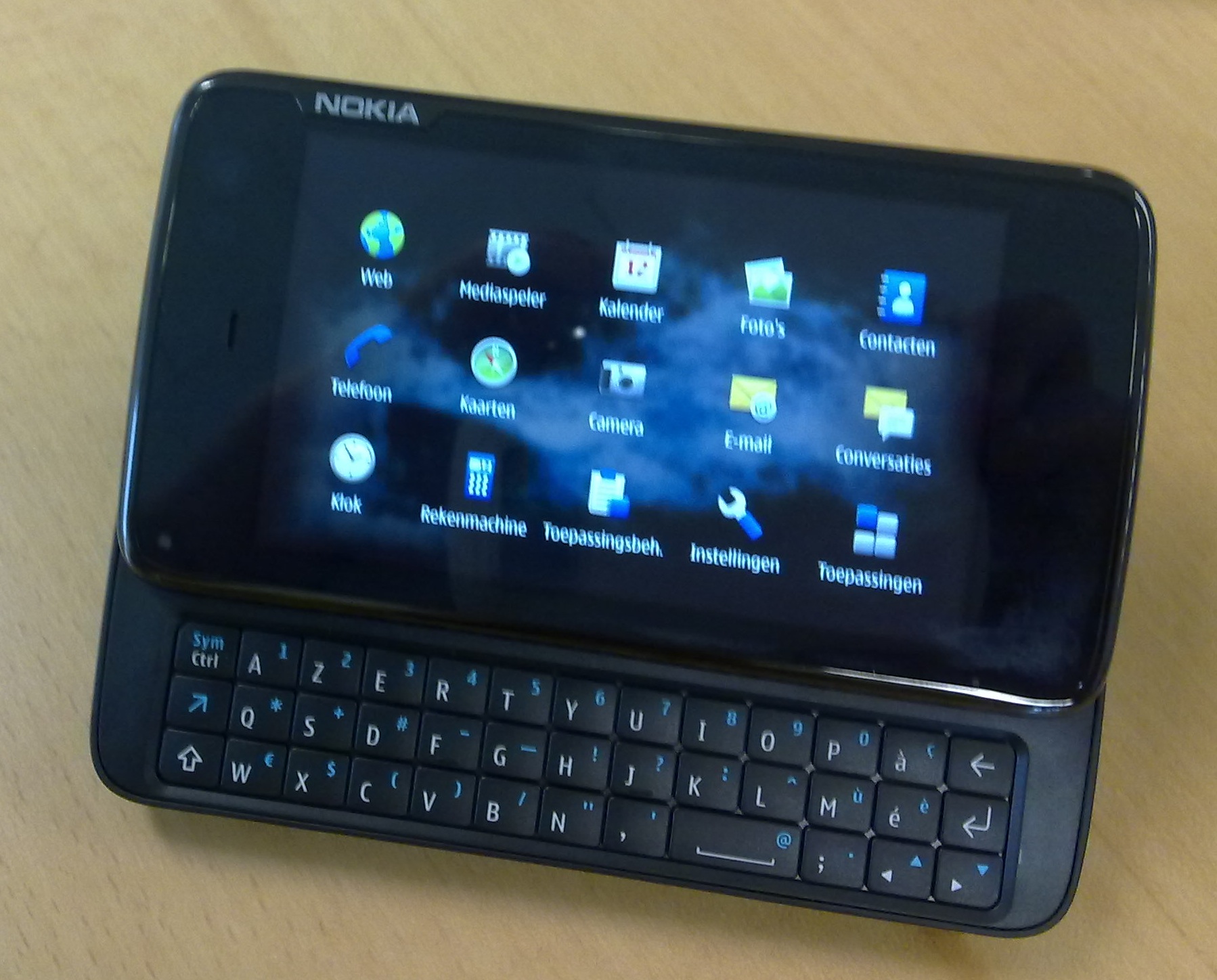
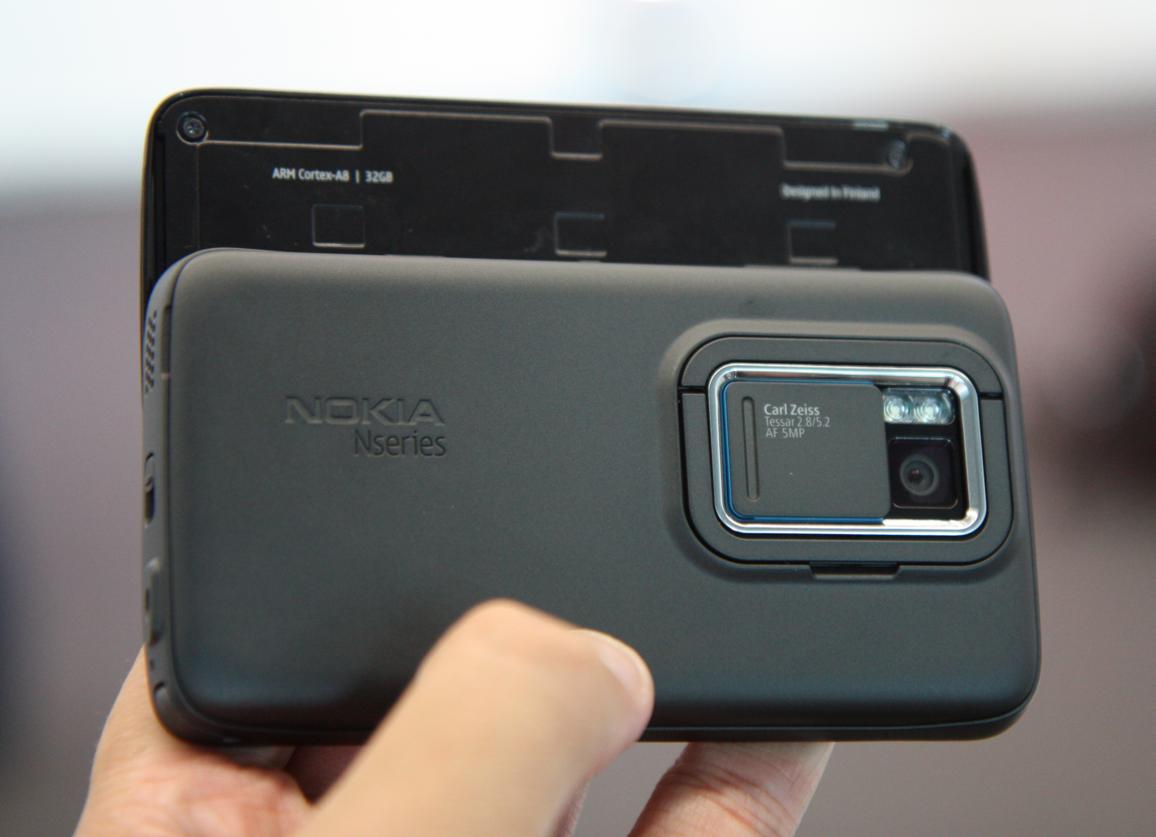
On January 7, 2010, Lenovo introduced a smartphone on Android - LePhone. The device received a 3.7-inch display with a resolution of 800x480, Snapdragon processor 1 GHz, 8 GB of internal memory. You can connect an external QWERTY-keyboard, speakers and battery to the gadget. The device was originally sent to the Chinese market.
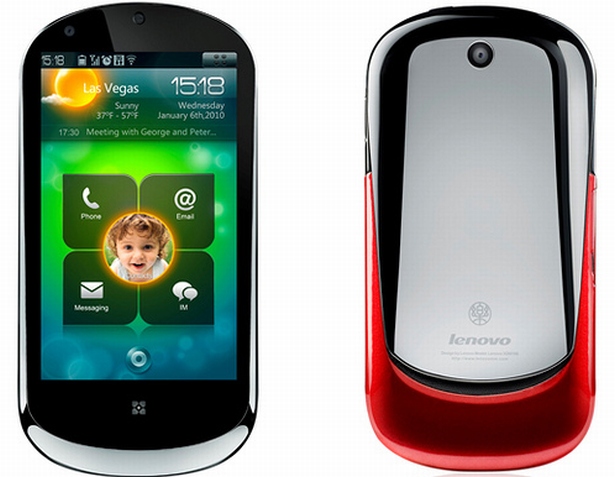

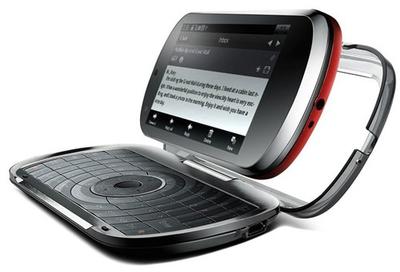
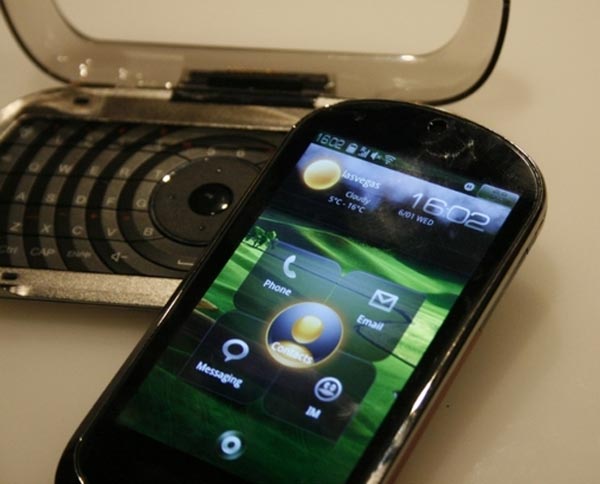
March 1, 2010, HTC began selling HTC Legend at a price of $ 750. The device boasted a 3.2-inch AMOLED-display, Android 2.2 operating system, Qualcomm 7227 600 MHz processor, as much as 384 megabytes of RAM and 512 MB of internal memory. But the memory could be expanded at the expense of microSD to 32 GB. Read the review , remember how it was.
Although the Legend case was made of a single piece of aluminum, it did not affect the quality of the signal reception, unlike the iPhone 4, whose signal level dropped several times as soon as it was taken in hand .
The back panel is decorated with plastic inserts.

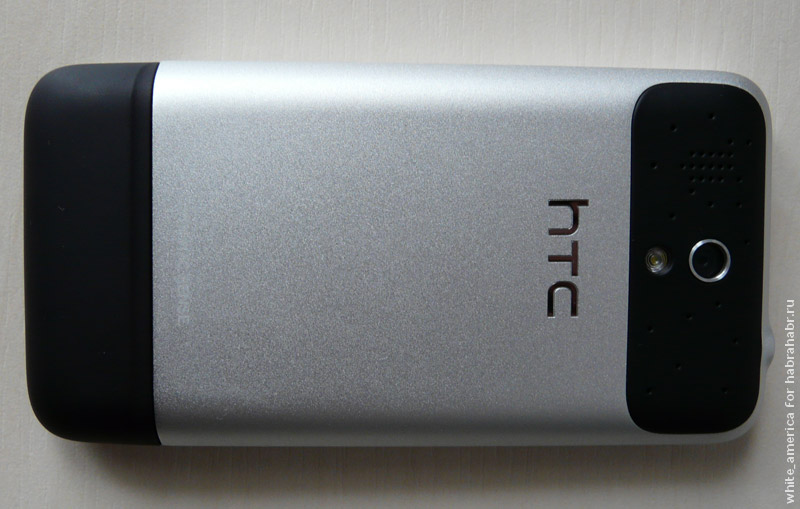
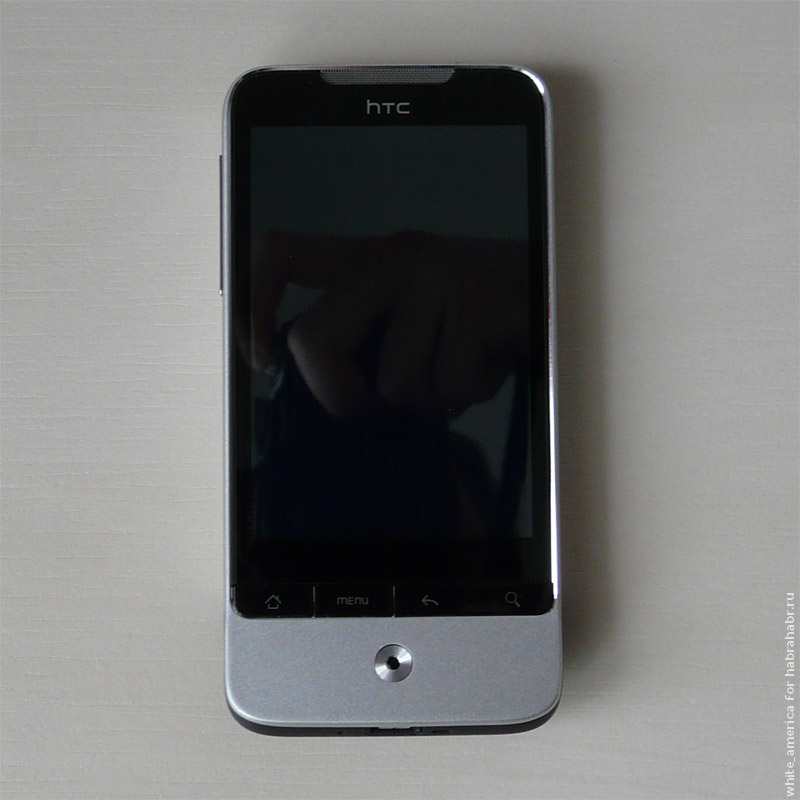
Samsung Galaxy S was released in June 2010, and in just two months they sold 800 thousand devices - an absolute record at that time for Android smartphones. The device received a 4-inch AMOLED screen of 480x800 pixels, an ARM Cortex A8 1 GHz processor, 512 MB of RAM and 2 to 16 GB of internal memory with support for memory cards up to 32 GB. This is one of the first smartphones with support for Bluetooth 3.0. The thickness of the device - 9.9 mm, it was one of the thinnest smartphones in the class. Cameras - 5 MP main and 0.3 front.
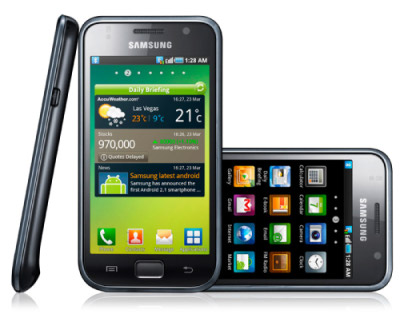
On June 7, 2010, Apple released a new iPhone 4 with an industrial design. Full of love and adoration review read here. The case is made of two pieces of polished reinforced glass and a frame of stainless steel, which caused problems with signal reception - and they were predicted before the device went on sale.

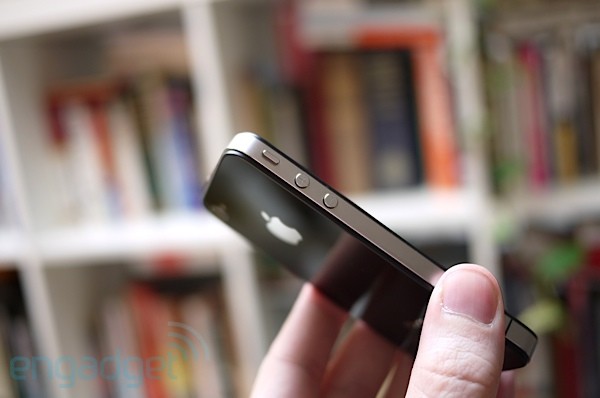
Apple's official response:
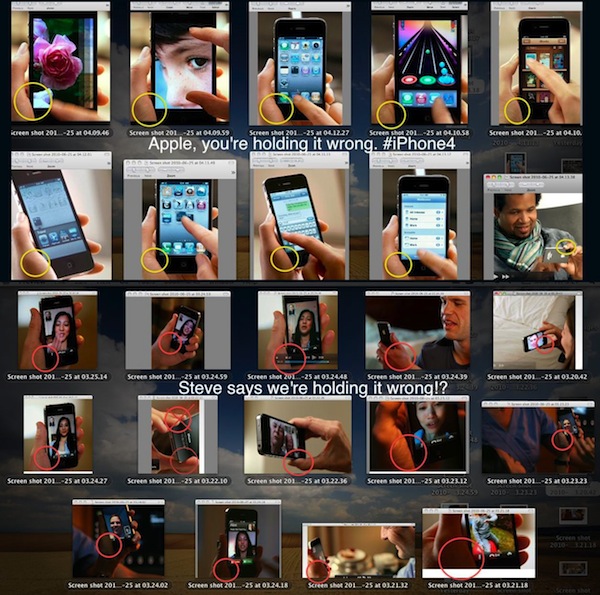
On September 7, 2010, IDC publishes a report with a forecast for smartphone sales growth in 2010 by 55% compared to 2009. And it says that by 2014 Android will occupy 24.6% of the smartphone market, Symbian - 32.9%, Blackberry - 17.3%, and iOS - 10.9%. Windows Mobile will have 9.6%.
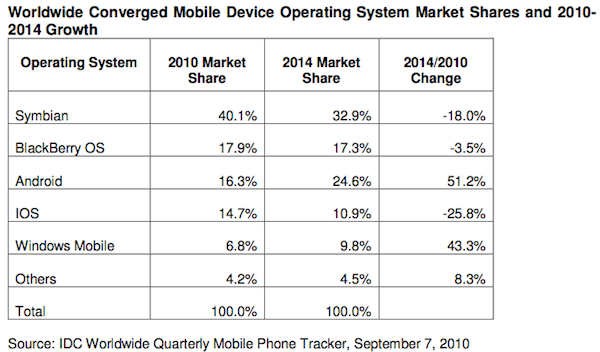
If we look briefly in 2014, we will see how badly IDC analysts were wrong in 2010. Android took 84.8% of the market, iOS - 11.6%, Windows Phone - 2.5%. And Blackberry got only 0.5%.

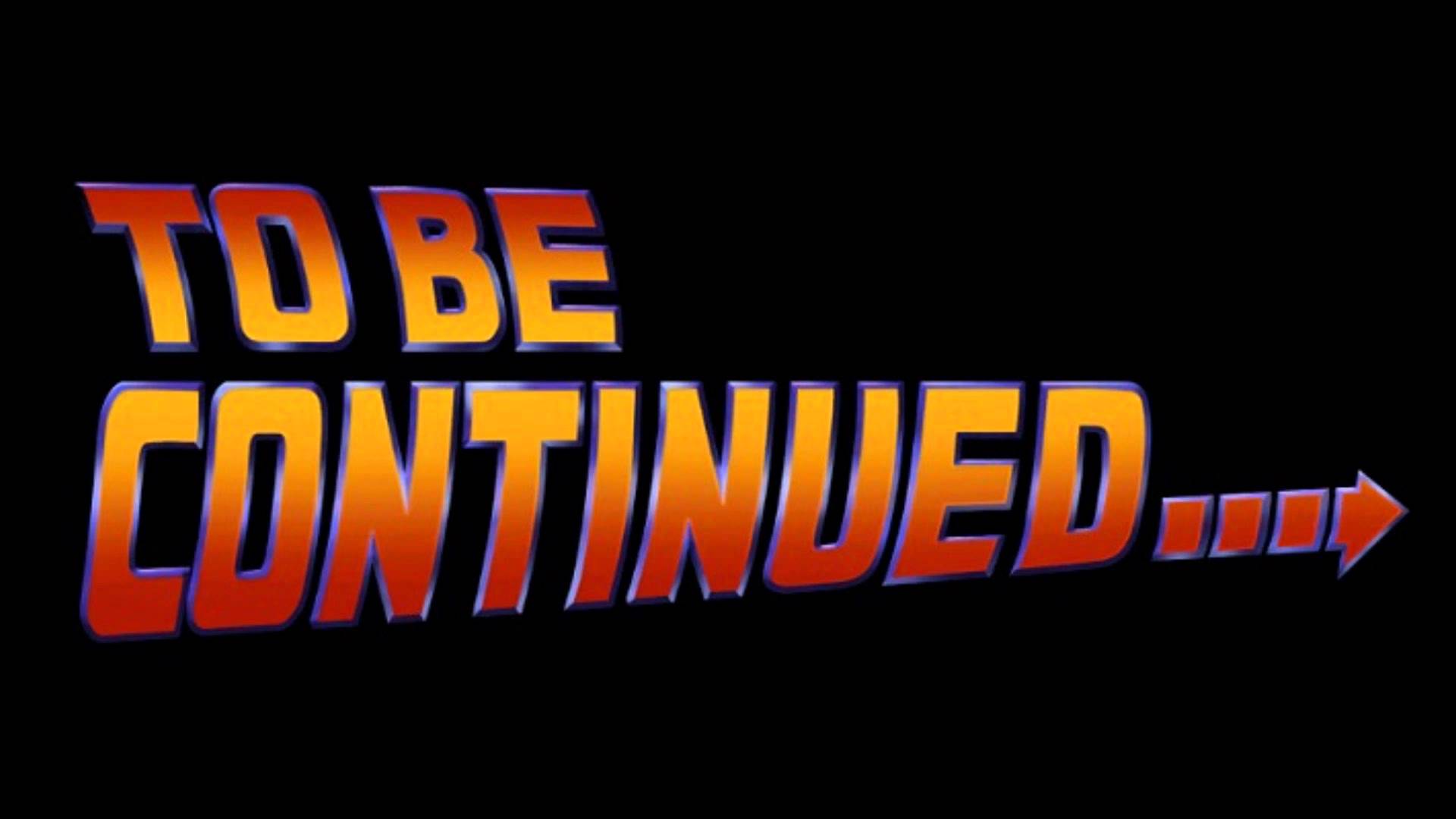
But this time I want to trace exactly the smartphones - communicators, smart phones, phablets, shades and other devices of the same type, the mere definition of which caused battles among geeks. And so you need to start with IBM Simon, released over 20 years ago . Then we move on to Symbian devices, the appearance of the first iPhone and the first Android smartphone from HTC, recall the devices from Nokia and end the journey with the latest gadgets introduced in 2016.
In the comments, please share your memories and provide links to your own reviews.
')
If the article lacks a specific model - please write about it in the comments with the image. So we will make the "Evolution" more complete.
Ibm simon
IBM Simon had a 4.7-inch large monochrome display with a resolution of 160x293 pixels, and weighed half a kilo without docking station. This futuristic for the time a mixture of a computer and a telephone without a keyboard, but with a touch screen, combined in itself a mobile phone, a pager, an organizer, mail, an alarm clock. The gadget worked on a 16-bit Vadem VG-230 16 MHz processor. By the way, there was a whole MB of RAM here. Want to see what's inside? Read analysis on Habré , and in a post on Geektimes read how it is possible to load pictures on this gadget.



The film "Network", 1995.
Nokia 9000 Communicator
Could you not have dreamed of this Nokia device in 1996? He had a keyboard and two monochrome displays - an internal 4.5-inch 640x200 pixels, an external one - 50x38. Weighed a gadget of 397 grams - you could fight off from anyone.
For the first time the device was called "Communicator".

Ericsson R380
We turn to the first device, which is called "smart phone" in the framework of the manufacturer's advertising campaign. This is the Ericsson R380, another gadget with a large 3.7-inch touchscreen display and on the Symbian operating system. Prior to this, Ericsson did many handheld computers without the ability to call and phones without being able to use them as computers. “We call it a smartphone,” the ad says.
The device was presented to the world in December 1999, and in 2000 they began to sell.

Blackberry 5810
The history of Blackberry began in 1984, when Mike Lazaridis, a student at the University of Waterloo, registered RIM - Research In Motion. The company began with the design of devices for wireless data transmission, and since the 1990s, borrowed text transmission technology in paging networks from Ericsson and RAM Mobile Data, and then released a pager with a QWERTY-keyboard that allows you to send messages. Further, most Blackberry devices looked exactly like this.

The first Blackberry smartphone appeared in 2002. The BlackBerry 5810 didn’t have a speaker and a microphone, we needed a headset for talking. But there was a keyboard.

Nokia 9210
Nokia 9210 continued the line of "communicators" from the Finnish company. We released a gadget on Symbian OS 6.0 in 2002, but I still remember how I wanted to get one. And I do not know what I would do with it?
Nokia 9210 could boast a color screen of 640x200 pixels, 8 MB of RAM and 14 MB of internal memory. He already worked for a short time - 10 hours. Review - here .


Nokia 7650
Nokia 7650, announced on June 26, 2002, was the first smartphone on Symbian OS - before that there were only communicators. Here you can begin to argue what and how should be called.
The device in the media dubbed the "camera phone" for the built-in camera, and he generally became the first device from Nokia with a camera.
The processor is a 32-bit RISC 104 MHz. Memory - 4 megabytes, of which only 3.4 MB were available to the user.

Sony Ericsson P800
In 2002, Sony Ericsson introduced the P800 smartphone with a UIQ 2.0 interface, made on the basis of Symbian OS v 7.0.

HTC Wallaby
Since April 2002, HTC has been producing handheld personal computers running Windows Mobile. The first was the HTC Wallaby with an Intel StrongARM 206 MHz processor, 32 MB of RAM and the same amount of flash memory, MMC and SD card support, a 3.5-inch TFT display with a resolution of 240x320 pixels ... The operating system is Microsoft Pocket PC 2002 Phone Edition.


A year later, the HTC Falcon appeared.
 '
'And in 2004 - HTC Himalaya. This handheld no longer had a huge antenna.

Siemens SX1
In February 2003, the German company Siemens with the original Siemens SX1 on Symbian OS announced the launch of the smartphone market. The numeric keys are located on both sides of the case. At the time of the start of sales in December 2003, the gadget was worth $ 750, but in two years it dropped to 250.

At the exhibition in Hannover in 2005, Siemens demonstrated a new concept of a smartphone - with a laser keyboard.

Sony Ericsson P910
In 2004, the Sony Ericsson P910 comes out. The gadget got a QWERTY keyboard on the back of the flip. Flip while you can generally remove from the gadget to get the classic version of the smartphone with a minimum of buttons. The model on Symbian is based on the ARM9 156 MHz processor, has 64 megabytes of RAM and supports Memory Stick PRO Duo up to 2 gigabytes.

HTC Blueangel
HTC Blueangel went on sale in October 2004. It was made under different brands, including Siemens. The diagonal of the display is 3.5 inches, the memory is 96 MB internal and 128 MB operational. The device worked on Windows Mobile 2003SE. The processor is an Intel PXA263 400 MHz. The gadget is made in the slider form factor with a full-sized keyboard.
Later there were Alpine, Gemini, Apache, Galaxy, Wizard, Prophet, Charmer, Hermes, Trinity and many other devices on Microsoft OS.

Blackberry 7210
The BlackBerry 7210 is the first Blackberry smartphone with a color display. The gadget had 2 megabytes of internal memory and a 960 mAh battery.

HTC Magician
HTC's Qtek S100 smartphone has been sold since 2005 under various names - 2 Xda II Mini (Asia), O2 Xda mini (Germany), T-Mobile MDA compact, i-mate JAM, Vodafone VPA Compact, Dopod 818, Krome Spy, and Orange SPV M500. This Windows Mobile 2003 device had 64 MB of internal and the same RAM, an SDIO / MMC card slot, a 1.3 megapixel camera, and a 2.8-inch screen with a resolution of 240x320 pixels.


Lenovo P930
In 1998, Nokia, Psion, Ericsson and Motorola merged to develop Symbian OS. Later, Sony Ericsson, Siemens, Panasonic, Fujitsu, Samsung, Sony, Sharp and Sanyo joined the consortium. The Symbian platform was the most popular for smartphones in the world in the mid-2000s. Read about Symbian 's sunrise and sunset here .
Lenovo's first gadget on Symbian was the Lenovo P930 device in 2005. The device supported GPRS, had a color display with the ability to enter the stylus and a 1-megapixel camera. The memory could be expanded using SD / MMC memory cards. The smartphone had a GPS navigator, an MP3 player, and it was possible to install JAVA applications on it.

Lenovo ET980
Lenovo ET980 Smartphone on Windows Mobile 5.0 received an Intel PXA270 312 MHz processor. Overlay on the smartphone added to it the usual buttons. The release of the gadget began in 2005.

Google buys Android
In July 2005, Google Inc. buys Android Inc., in November 2007, announces the creation of the Open Handset Alliance and announces the open mobile Android platform. In the same month, the alliance presents the first version of the developer package. In 2008, the first version of the operating system was released.
HTC P3600
In September 2006, HTC released the P3600 on Windows Mobile - a 150-gram communicator with a 2.8-inch TFT display and a resolution of 240x320, two cameras — the main 2 MP and the front one, 64 MB of operational memory and 128 MB of internal memory. Samsung for the smartphone produced the processor.

Nokia N95
In March 2007, the Finns released the Nokia N95. The user Habra called him the King of smartphones , and in the first comment another user expressed his “fi”: “there is no qwerty keyboard, so I don’t even look in his direction”.
Form factor - brick slider. The display is 2.6-inch 240x320 pixels. 330 MHz processor. Internal memory 160 MB. Camera - 5 megapixel with autofocus, electronic stabilizer and built-in flash. Worked gadget on Symbian OS v9.2.

iphone
In May 2007, it became known that sales of the Apple iPhone will begin in June. Steve Jobs tried to squeeze the maximum out of his subordinates so that the device was close to the ideal. Not one book has written about it.


HTC S740
Smartphone HTC S740 was released in 2008. It is based on a Qualcomm MSM7225 528 MHz processor, had 256 megabytes of RAM and internal memory, and supported microSD. The screen size is 2.4 inches, and the resolution is 320x240 pixels.


BlackBerry Pearl 8120
In October 2007, the BlackBerry launches one of its first smartphones aimed not at the corporate segment, but at ordinary users. The BlackBerry Pearl 8120 smartphone has a simplified keyboard - perhaps it can be called a “semi-QWERTY”, a 2 megapixel camera and Wi-Fi support. Color LCD-display had a resolution of 240x260 pixels.
The internal memory of 64 megabytes could be increased with the help of microSD.

Blackberry bold 9000
The BlackBerry Bold 9000 smartphone has got a 2.6-inch (non-touch) display with a resolution of 460x320 pixels, a 2-megapixel camera and a 624 MHz processor. RAM is 128 megabytes, and the built-in memory is already a whole gigabyte. It was the first smartphone from RIM with GPS. The device was announced on May 12, 2008, and started selling on July 9, 2008.

iPhone 3G
On June 10, 2008, Apple introduced the iPhone 3G , an improved model in which the company tried to get rid of the jambs of the first version - for example, the device was now connected to 3G networks.

HTC Dream
Sales of the HTC Dream, the first HTC device on Android, began in April 2009. For the first time, photos of this “GooglePhone” and “iPhone Killers” appeared online in September 2008. The smartphone has a qwerty keyboard, a 3 megapixel camera and a 3.5-inch touchscreen display.
A year after the release of the smartphone, Apple accused HTC of violating 20 patents and prepared more than 700 pages with a description of the claims:
We can sit and watch how competitors steal our patented inventions, or can do something about it. We decided to take action. We believe that competition in the market is healthy, but competitors should create their own unique technologies, and not steal ours.
This press release with the announcement of HTC War, the Taiwanese company gave a logical answer:
We only became aware of Apple’s intentions from the press release. The court document has not yet been served, so we cannot comment on the charges yet. We respect the value of patent rights, but we also want to protect our own innovations. We invent and patent our own technologies for more than 13 years.
The list of devices that allegedly violated Apple’s patents included Nexus One, Touch Pro, Touch Diamond, Touch Pro2, Tilt II, Pure, Imagio, Dream / G1, myTouch 3G, Hero, HD2 and Droid Eris. And this can be called recognition by Apple.


Samsung galaxy
Korean smartphone Samsung announced its first smartphone in the Galaxy line on April 27, 2009, a few days after the launch of HTC Dream sales. A tiny 3.2-inch AMOLED screen, a 5-megapixel camera with autofocus and LED flash, a 3.5-mm headphone jack, a set of Google's pre-installed applications, 8 GB of internal memory, a 1500 mAh battery - that's what Samsung Galaxy could boast i7500 Read the review here .
Russian commercial - filmed in one double.

HTC Magic
The second HTC phone on Android - HTC Magic - was released in April 2009, and demonstrated in February of the same year at Mobile World Congress. Overview of the smartphone read here . Pay attention to the box around the camera.

BlackBerry Storm 9500
In 2008, BlackBerry released its first smartphone with a touchscreen and without a QWERTY keyboard. The gadget was presented in September, and released in November 2008. The device has a display with a diagonal of 3.25 inches and a resolution of 360x480 pixels. The processor is a Qualcomm MSM7600 528 MHz. Again, the gadget had 128 megabytes of RAM. Built-in - 1 gigabyte, and there was support for microSD up to 16 GB.

Nokia 5800 XpressMusic
The Nokia 5800 smartphone was introduced in October 2008. The device had a 3.2-inch screen with a resolution of 640x360 pixels. The Freescale MXC300-30 ARM11 434 MHz processor, 128 megabytes of RAM. Included with the gadget was a microSD for 8 gigabytes.
The main camera of 3.2 megapixels received Carl Zeiss optics, autofocus and LED flash.
iPhone 3GS
On June 8, 2009 at WWDC in San Francisco, Apple showed the iPhone 3GS with the updated iPhone OS 3.0. A 3.5-inch LCD display with a resolution of 320x480 pixels was developed by Apple, produced by LG. The processor is developed and produced by the Korean competitor Samsung S5PC100 ARM 833 MHz, but the hardware frequency is reduced to 600 MHz. Camera - 3 megapixels. RAM - 256 MB, built-in - 16 or 32 GB. The device has received support for HSDPA communication.


HTC Hero
HTC Hero went on sale in July 2009, in Russia - in September. It was the third HTC smartphone on the Android operating system. And the first Android-based smartphone that supports Adobe Flash.
The review is on Geektimes - read the link .
What about the technical characteristics - Hero had 256 megabytes of flash memory and 288 megabytes of RAM. The processor is a Qualcomm MSM7600A ARM11 528 MHz or MSM7200A ARM11 528 MHz.

HTC Evo 4G
Smartphone HTC Evo 4G has become the first Android device with support for WiMAX.
The device on the Qualcomm QSD8650 1 GHz processor received 576 megabytes of RAM and 1 GB of internal memory, a 4.3-inch screen with a resolution of 480x800 pixels and an 8-megapixel camera.

Motorola droid
In October 2009, Motorola released the Droid smartphone, a slider on Android with a QWERTY keyboard. The device worked with Wi-Fi-networks, had a 3.7-inch display with a resolution of 854x480, supported microSD memory cards up to 16 gigabytes. The processor is Texas Instruments OMAP 3430. The internal memory is 512 megabytes, the operational memory is 256 megabytes.
This is the first smartphone that came with the free Google Maps Navigation application.

As of July 2010, the Motorola Droid was the most popular Android device. And the second, third, fourth, fifth, eighth and ninth places in this rating were taken by HTC devices.

HTC HD2
In November 2009, HTC released Leo (HD2). This is a smartphone on the Windows Mobile operating system, with a 5-megapixel autofocus camera, a 4.3-inch TFT display with a resolution of 480x800 pixels. Qualcomm Snapdragon QSD8250 1 GHz processor, 512 megabytes of internal and 488 megabytes of RAM. HTC Leo is the first smartphone with a capacitive screen on Microsoft OS.
Surprisingly, in the review of the smartphone on Geektimes, such phrases slipped: "It lies in your hand like a glove, but people with small palms are unlikely to be comfortable using the phone with one hand" and "However, it is more designed for men with large palms and fingers." Let me remind you, the display is 4.3 inches. Now several of my friends of girls walk with Asus 5.5 inches and are very pleased with its size.
In other reviews, they wrote “HD2 is really huge.” I look at my Lenovo Phab Plus and am surprised.



Nokia N900
In November 2009, Nokia launches the Nokia N900 Internet Tablet, announced on September 2 at Nokia World. A slider with a QWERTY-keyboard on Maemo received 256 megabytes of RAM and 32 GB of flash memory, a slot for microSD up to 32 GB, a 5-megapixel camera, a 3.5-inch screen with a resolution of 800x480 pixels.


Lenovo LePhone
On January 7, 2010, Lenovo introduced a smartphone on Android - LePhone. The device received a 3.7-inch display with a resolution of 800x480, Snapdragon processor 1 GHz, 8 GB of internal memory. You can connect an external QWERTY-keyboard, speakers and battery to the gadget. The device was originally sent to the Chinese market.




HTC Legend
March 1, 2010, HTC began selling HTC Legend at a price of $ 750. The device boasted a 3.2-inch AMOLED-display, Android 2.2 operating system, Qualcomm 7227 600 MHz processor, as much as 384 megabytes of RAM and 512 MB of internal memory. But the memory could be expanded at the expense of microSD to 32 GB. Read the review , remember how it was.
Although the Legend case was made of a single piece of aluminum, it did not affect the quality of the signal reception, unlike the iPhone 4, whose signal level dropped several times as soon as it was taken in hand .
The back panel is decorated with plastic inserts.



Samsung Galaxy S
Samsung Galaxy S was released in June 2010, and in just two months they sold 800 thousand devices - an absolute record at that time for Android smartphones. The device received a 4-inch AMOLED screen of 480x800 pixels, an ARM Cortex A8 1 GHz processor, 512 MB of RAM and 2 to 16 GB of internal memory with support for memory cards up to 32 GB. This is one of the first smartphones with support for Bluetooth 3.0. The thickness of the device - 9.9 mm, it was one of the thinnest smartphones in the class. Cameras - 5 MP main and 0.3 front.

iPhone 4
On June 7, 2010, Apple released a new iPhone 4 with an industrial design. Full of love and adoration review read here. The case is made of two pieces of polished reinforced glass and a frame of stainless steel, which caused problems with signal reception - and they were predicted before the device went on sale.


Apple's official response:
If you take in your hand any mobile phone, it will affect the operation of its antenna. Moreover, depending on the location of the antennas, in some places of the body it will be noticeably stronger. This is a truth of life for any cordless phone. If you have ever encountered this on your iPhone 4, avoid grabbing it by the bottom left in such a way that your hand touches both sides of the metal edge. Or simply use one of the many covers.

IDC Forecast
On September 7, 2010, IDC publishes a report with a forecast for smartphone sales growth in 2010 by 55% compared to 2009. And it says that by 2014 Android will occupy 24.6% of the smartphone market, Symbian - 32.9%, Blackberry - 17.3%, and iOS - 10.9%. Windows Mobile will have 9.6%.

If we look briefly in 2014, we will see how badly IDC analysts were wrong in 2010. Android took 84.8% of the market, iOS - 11.6%, Windows Phone - 2.5%. And Blackberry got only 0.5%.


Source: https://habr.com/ru/post/391251/
All Articles